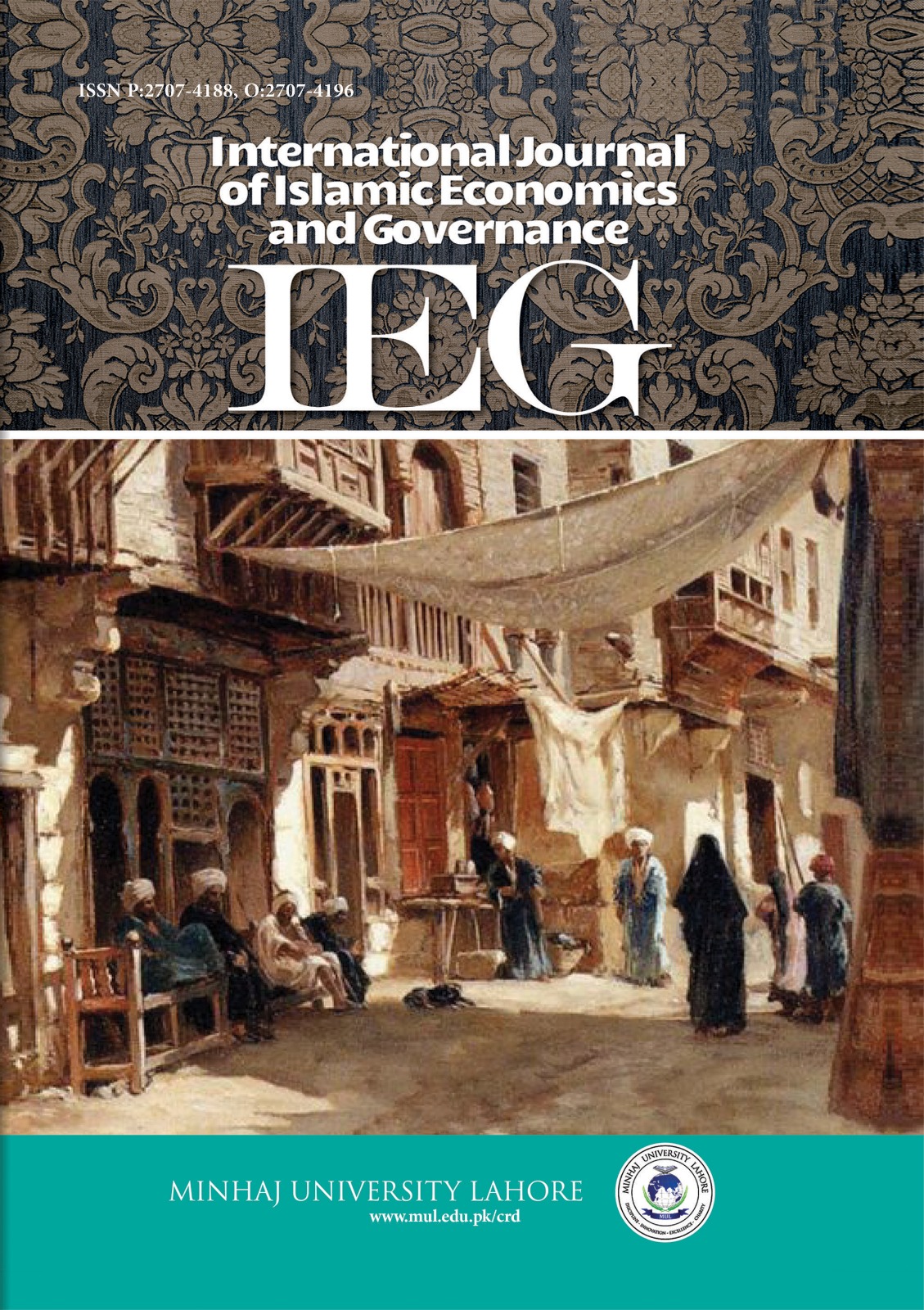Estate Planning of Shari’ah-Compliant Digital Assets Among Malaysians: A Mixed-Methods Approach
DOI:
https://doi.org/10.58932/MULD0041Keywords:
Digital asset, Digital estate, Shariʿah, Estate planning, MalaysiaAbstract
This paper examines Malaysia's regulatory landscape and public awareness of digital assets, focusing on individuals under 45. It highlights the lack of global regulatory development for digital assets and the overlooks the aspect of posthumous management. The research evaluates awareness, adoption, and understanding of digital asset regulations, emphasising legal and Shariʿah challenges in estate management. Using a mixed-methods approach, the study collected 86 responses via social media surveys supported by doctrinal legal research. Findings show high interest in digital assets among younger with only 11.3% of participant possessing understanding of Shari’ah-compliant digital assets, whereas 20.8% had moderate familiarity with relevant laws on the assets. The study calls for educational campaigns and clearer Shariʿah-compliant regulatory guidelines to enhance market confidence and bridge the digital literacy gap. It offers insights for policymakers and digital exchanges on managing digital assets posthumously and suggests future research on specialised digital estate planning services and regulatory impacts.
References
Akhlaq, A., & Ahmed, E. (2013). The effect of motivation on trust in the acceptance of internet banking in a low income country. International Journal of Bank Marketing, 31(2), 115–125.
Azman, N. H. (2021). Luno plans to add more digital asset offerings next year. The Malaysian Reserve. https://themalaysianreserve.com/2021/12/10/luno-plans-to-add-more-digital-asset-offerings-next-year/#:~:text=Meanwhile%2C Luno is also looking,to be launched next year.
Bank Negara Malaysia. (2022). Financial Stability Review- First Half 2022.
Berger, S. (2019). Markets in crypto-assets (MiCA) (Issue November).
Boroumandfar, K., Momenzadeh, F., Tavakkol, K., Kelishadi, R., & Rad, G. S. (2010). The effect of education on behavioral intention model of mothers’ attitude towards over weight preschool children’s nutritional patterns. Iranian Journal of Nursing and Midwifery Research, 15(Suppl1), 386.
Carter, E. R. (2016). Estate Planning for Digital Assets: Assigning Tax Basis and Value to Digital Assets. SSRN Electronic Journal, October. https://doi.org/10.2139/ssrn.2850156
Conway, H., & Grattan, S. (2017). The ‘New’ New Property: Dealing with Digital Assets on Death. Modern Studies in Property Law, 9.
Crawford, B. J. (2020). Blockchain wills. Indiana Law Journal, 95(3), 735–788.
Firth, R. (2019). Cryptocurrencies: Issues and Best Practices. Journal of Financial Planning, 32(4).
Gan, W. N., Lim, J. X., Lim, S. P., Yoong, N. H. L., & Lim, R. X. (2023). Cashless society: A study on intention to adopt e-wallet by the young adults in Malaysia. UTAR.
Hanafi, S. F., & Rahman, S. A. (2019). Regulating digital currency: taming the unruly. In Emerging issues in Islamic finance law and practice in Malaysia (pp. 265–280). Emerald Publishing Limited.
Helleiner, E. (2011). Understanding the 2007–2008 global financial crisis: Lessons for scholars of international political economy. Annual Review of Political Science, 14, 67–87.
Jalaludin, A. J., Nasihin, A., Ibrahim, N., Ithari, Z., & Yoong, J. (2021). The Rise of Millennial and Gen Z Investors: Trends, Opportunities and Challenges for Malaysia. In Institute for Capital Market Research Malaysia.
Kaal. (2021). Digital Asset Market Evolution. Journal of Corporation Law, 46(4), 909–964.
Kamis, N. S., & Abd. Wahab, N. (2022). Analysing the Loopholes on Estate Administration of Cryptocurrency in Malaysia. International Journal of Islamic Business, 7(2), 65–77. https://doi.org/10.32890/ijib2022.7.2.5
Kamis, N. S., Mohd Isa, M., & Md Noor, N. S. (2022). Can Muslim Inherit Bitcoin? Discovering The Continuity of Digital Asset in Perlis. International Journal of Islamic Business (IJIB), 7(2), 44–51.
Kamis, N. S., Wahab, N. A., & Hussain, M. A. (2023). A Call for Regulation of Estate Administration of Cryptocurrency in Malaysia. Journal of Legal Studies, 14(2), 735–764. https://doi.org/https://doi.org/10.32890/uumjls2023.14.2.13
Katuk, N., Abd Wahab, N., & Kamis, N. S. (2023). Cryptocurrency estate planning: the challenges, suggested solutions and Malaysia’s future directions. Digital Policy, Regulation and Governance , 25(4), 325–350. https://doi.org/10.1108/DPRG-10-2021-0126
Kaya, N., Turan, N., & Palloş, A. O. (2011). Men nurse image in Turkey. Journal of Human Sciences, 8(1), 16–30.
Khuen, L. W. (2022). Cover Story: Cryptos go mainstream. The Edge Malaysia. https://theedgemalaysia.com/article/cover-story-cryptos-go-mainstream
Król, K., & Zdonek, D. (2023). Digital Assets in the Eyes of Generation Z: Perceptions, Outlooks, Concerns. Journal of Risk and Financial Management, 16(1). https://doi.org/10.3390/jrfm16010022
Liébana-Cabanillas, F., Sánchez-Fernández, J., & Muñoz-Leiva, F. (2014). Antecedents of the adoption of the new mobile payment systems: The moderating effect of age. Computers in Human Behavior, 35, 464–478.
Madavaram Ravi. (2022). Malaysia’s crypto scene is booming. What are the risks? New Straits Times.
https://www.nst.com.my/business/2022/05/796525/malaysias-crypto-scene-booming-what-are-risks
Mali, P., & Prakash, A. (2020). Death in the era of Perpetual Digital afterlife: Digital assets, Posthumous legacy, ownership and its legal implications: Vol. March.
Mohamed, K. (2016). Combining methods in legal research. The Social Sciences, 11(21), 5191–5198. https://doi.org/10.3923/sscience.2016.5191.5198
Mohd Thas Thaker, H., Subramaniam, N. R., Qoyum, A., & Iqbal Hussain, H. (2023). Cashless society, e‐wallets and continuous adoption. International Journal of Finance & Economics, 28(3), 3349–3369.
Nawang, N. I., & Azmi, I. M. A. G. (2021). Cryptocurrency: An insight into the Malaysian regulatory approach.
Ndubisi, N. O. (2005). Integrating the Moderation Effect of Entrepreneurial Qualities into the Tam Model and Treatment of Potential Confounding Factors. Journal of Information Science and Technology, 2(1).
New, S. T., Property, N., Assets, D., Conway, I. H., Conway, H., & Grattan, S. (2017). The ‘New’ New Property: Dealing
with Digital Assets on Death. Modern Studies in Property Law: Volume 9, 9, 99–115. https://doi.org/10.5040/9781782257578.ch-006
Nizam, F., Hwang, H. J., & Valaei, N. (2019). Measuring the effectiveness of E-wallet in Malaysia. Big Data, Cloud Computing, Data Science & Engineering 3, 59–69.
Omoola, S., & Ibrahim, H. K. (2023). The Legal Implications of Abandoned Digital Assets in Sharīʿah-Compliant Fintech Platforms. ISRA International Journal of Islamic Finance, 15(2), 60–76.
Panos, G. A., Karkkainen, T., & Atkinson, A. (2020). Financial literacy and attitudes to cryptocurrencies.
Pradhan, S., & Wang, S. (2020). Exploring Factors Influencing Older Adults’ Willingness to Use Robo-Advisors. Australasian Conference on Information Systems.
Punwatkar, S., & Verghese, M. (2018). Adaptation of e-wallet payment: an empirical study on consumers’ adoption behavior in central india. International Journal of Advanced in Management, Technology and Engineering Sciences, 8(3), 1147–1156.
Rahim, N. F., Bakri, M. H., Fianto, B. A., Zainal, N., & Hussein Al Shami, S. A. (2023). Measurement and structural modelling on factors of Islamic Fintech adoption among millennials in Malaysia. Journal of Islamic Marketing, 14(6), 1463–1487.
Saleh, A. J., Faleh, F. A., Alazzam, Aldrou, K. K. A. R., & Zavalna, Z. (2020). Legal Aspects of the Management of Cryptocurrency Assets in the National Security System. Journal of Security and Sustainability Issues, 10(1), 267–272. https://doi.org/10.9770/jssi.2020.10.1(17)
Securities Commission Malaysia. (2020). RESOLUTIONS OF THE SHARIAH ADVISORY COUNCIL OF THE SC. Digital Assets in Shariah Perspective.
Seong, L. C., Khin, A. A., Huei, C. T., & Li, T. Y. (2021). Impact Of Demographic Factors On The Behavioural Intention To Adopt Cryptocurrency Among Malaysia’s Millennials: An Econometric Approach. International Conference on Business, Accounting, Finance and Economics 2021: Fostering Economic Recovery: Balancing Between Lives and Livelihoods, October.
Subramaniam, P. (2022). Trend: Millennials and Gen Z reshaping asset management industry. The Edge Malaysia. https://theedgemalaysia.com/article/trend-millennials-and-gen-z-reshaping-asset-management-industry
Suhaidi, N. (2021). More Malaysians recognise digital asset investment potentials. The Malaysian Reserve. https://themalaysianreserve.com/2021/09/30/more-malaysians-recognise-digital-asset-investment-potentials
Sukumaran, S., Bee, T. S., & Wasiuzzaman, S. (2022). Cryptocurrency as an investment: The Malaysian context. Risks, 10(4), 86.
Taylor, P. F., Woods, V. A., & Tanenbaum, J. (2019). Estate Planning with Cryptocurrency. Prob. & Prop.
Tyszka, A. F. & C. E. (2014). Virtual Currency Estate Planning, Bit by Bit. Actec Lj 40, 40(2), 1–26.
Zahudi, Z. M., & Amir, R. (2016). Regulation of virtual currencies: Mitigating the risks and challenges involved. Journal of Islamic Finance, 5(1), 63–73.
Zhao, H., & Zhang, L. (2021). Financial literacy or investment experience: which is more influential in cryptocurrency investment? International Journal of Bank Marketing, 39(7), 1208–1226.









